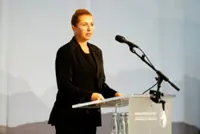Icebergs are seen at the mouth of the Jakobshavn ice fjord near Ilulissat, Greenland. Photo: Reuters/Hannibal Hanschke/File Photo
Part of Greenland's ice sheet is thinning further inland than previously believed, which will likely lead to greater sea level rise by the end of this century, a new study found on a recent Wednesday (Nov 9).
The findings pertain to a northeast section of the giant ice block covering, but the trend is likely happening elsewhere on Greenland and Earth's other ice sheet, in Antarctica.
Already a subscriber? Log in
Save 30% OFF The Star Digital Access
Cancel anytime. Ad-free. Unlimited access with perks.





